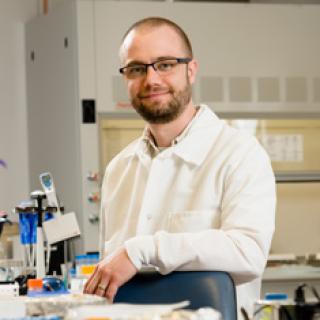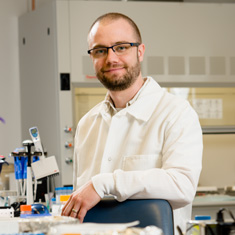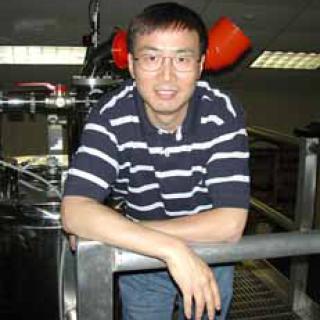
Jason R. Stagno, Ph.D.
- Center for Cancer Research
- National Cancer Institute
- Bldg. 538/Room 126
- Frederick, MD 21702
- 301-846-6539
- jason.stagno@nih.gov
RESEARCH SUMMARY
As a structural biologist, my research has focused on structure determination by X-ray crystallography to study with atomic precision proteins, nucleic acids, and their complexes, and to determine structure-function relationships. In the Protein-Nucleic Acid Interactions Section, we employ a diverse set of biophysical techniques, including nuclear magnetic resonance (NMR), small-angle X-ray scattering (SAXS), and X-ray crystallography to study protein-nucleic acid complexes and their atomic interactions. A complementary-methods approach allows us to address significant biological questions more completely and more accurately at the molecular level. Such information is highly valuable for: visualizing the molecular steps of important cellular processes; understanding how specific sequences, domains, molecular folds, and macromolecular complexes are essential for their cellular functions; understanding substrate binding and specificity; elucidating mechanisms of catalysis; and structure-based therapeutic design.
Areas of Expertise

Jason R. Stagno, Ph.D.
Research
As a member of the Protein-Nucleic Acid Interaction (PNAI) Section, Dr. Stagno's research focuses on using structure-based approaches to understand key molecular interactions involving RNA in the regulation of gene expression. By combining various biophysical methods, including NMR, small-angle X-ray scattering (SAXS), and X-ray crystallography, the PNAI is currently investigating the molecular structures and key interactions of two RNA elements that are of great significance to public health. The first is the adenine riboswitch found in the 5'-UTR of mRNAs of many bacterial pathogens. This structured RNA element is essential for regulating gene expression in response to adenine as a metabolite. The second is the Rev response element (RRE), a large (~350 nt) RNA structure located in the env-coding region of the HIV-1 genome. The HIV-1 Rev protein binds to RRE in a highly specific manner, resulting in Rev oligomerization. Formation of this Rev-RRE complex facilitates nuclear export of unspliced and partially spliced mRNAs, which are essential for producing late-stage viral proteins and for providing genomes for budding virions. Because RRE is a unique feature of HIV-1 mRNA and is essential to the virus life-cycle, this RNA element may serve as an important molecular target for HIV-therapeutic design. In 2013, the PNAI determined the three-dimensional topological structure of RRE using SAXS.
Although this structure was a major breakthrough in furthering our understanding of the Rev-RRE interaction, atomic resolution is needed to design molecules that specifically target the Rev binding sites on RRE. Toward this goal, Dr. Stagno is using X-ray crystallography to elucidate the structures of RRE-containing complexes.
Publications
- Bibliography Link
- View Dr. Stagno's Complete Bibliography at Google Scholar.
Structures of riboswitch RNA reaction states by mix-and-inject XFEL serial crystallography
Crystal structure of a plectonemic RNA supercoil
Structural basis for RNA recognition by NusB and NusE in the initiation of transcription antitermination
Structure of the mitochondrial editosome-like complex associated TUTase 1 reveals divergent mechanisms of UTP selection and domain organization
Dual role of the RNA substrate in selectivity and catalysis by terminal uridylyl transferases
Biography

Jason R. Stagno, Ph.D.
Dr. Stagno conducted his graduate work in molecular biology at the University of California, Irvine in the lab of Professor Hartmut (Hudel) Luecke. His research focused on structure determination by X-ray crystallography of terminal uridylyltransferases (TUTases) to study substrate specificity, catalysis, and their role in RNA editing in trypanosomes. In 2009, he received his Ph.D. and joined Dr. Xinhua Ji's group as a postdoctoral fellow in the Macromolecular Crystallography Lab at CCR. Here, his research focused on structure determination of protein-nucleic acid complexes involved in bacteriophage lambda transcription antitermination and RNA supercoiling. In 2012, Dr. Stagno became a Health Science Policy Analyst in the Office of Science Policy, Office of the Director, NIH, where he was involved in major science policy issues involving biosafety, biosecurity, and so-called dual use research of concern. In June 2014, he returned to CCR, joining Yun-Xing Wang's group as a staff scientist in the Structural Biophysics Laboratory.
